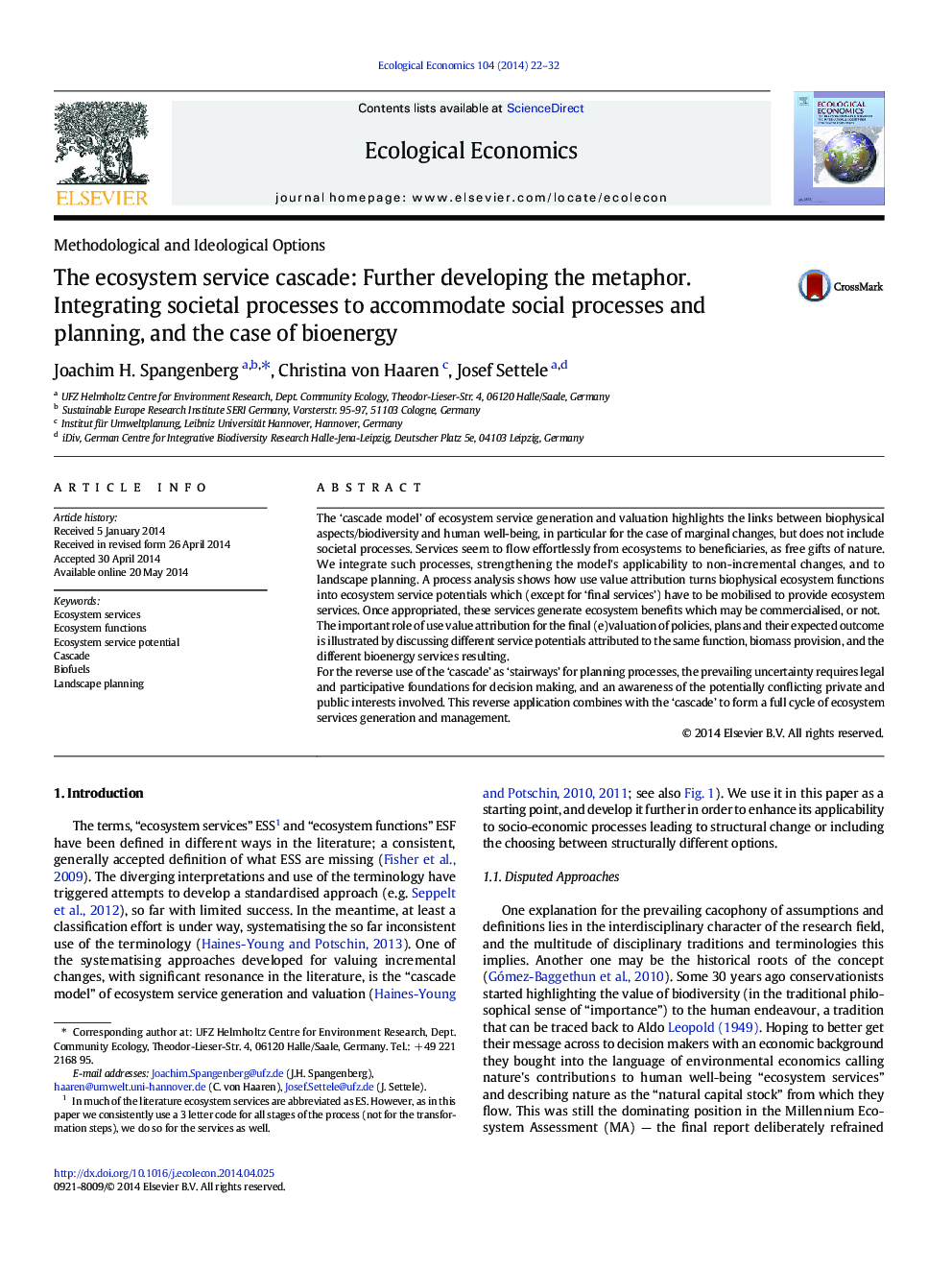| Article ID | Journal | Published Year | Pages | File Type |
|---|---|---|---|---|
| 5049557 | Ecological Economics | 2014 | 11 Pages |
â¢Attributing ESPs requires choices between competing options held by different agents.â¢Ecosystem services are no free gifts of nature but need to be mobilised by investment.â¢Biomass use based ecosystem service provision sustainability is scale dependent.â¢Public planning needs to enforce public good protection against private interest.
The 'cascade model' of ecosystem service generation and valuation highlights the links between biophysical aspects/biodiversity and human well-being, in particular for the case of marginal changes, but does not include societal processes. Services seem to flow effortlessly from ecosystems to beneficiaries, as free gifts of nature. We integrate such processes, strengthening the model's applicability to non-incremental changes, and to landscape planning. A process analysis shows how use value attribution turns biophysical ecosystem functions into ecosystem service potentials which (except for 'final services') have to be mobilised to provide ecosystem services. Once appropriated, these services generate ecosystem benefits which may be commercialised, or not.The important role of use value attribution for the final (e)valuation of policies, plans and their expected outcome is illustrated by discussing different service potentials attributed to the same function, biomass provision, and the different bioenergy services resulting.For the reverse use of the 'cascade' as 'stairways' for planning processes, the prevailing uncertainty requires legal and participative foundations for decision making, and an awareness of the potentially conflicting private and public interests involved. This reverse application combines with the 'cascade' to form a full cycle of ecosystem services generation and management.
